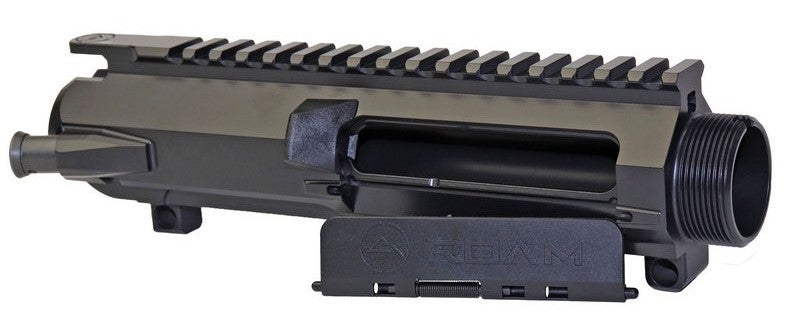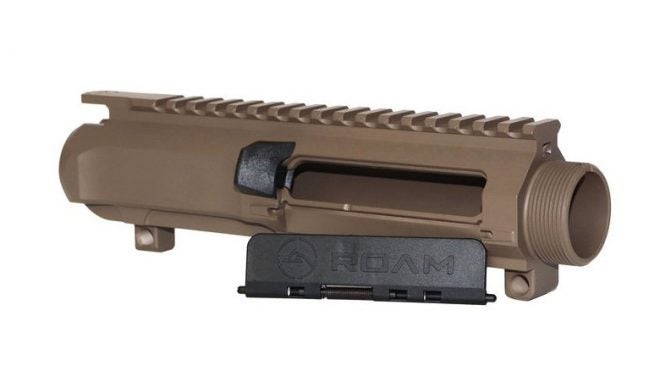Back at SHOT Show 2020, North Dakota-based Roam has introduced a family of lightweight AR-10 pattern rifles called R-10. Shortly after the introduction, in May 2020, these rifles became available for purchase. What sets R-10 rifles apart is the Roam magnesium alloy used in making the receivers that allows significantly reducing the overall weight of these rifles. The lightest of Roam R-10 line of rifles is the R-10 Red River Ultralight which weighs in at 5.48 lbs with a 16″ pencil barrel and titanium BCG. The company has recently announced that the upper receivers used in the R-10 rifles are now available separately.

Roam R-10 upper receiver with forward assist.
Roam R-10 upper receivers are compatible with DPMS Gen 1 lower receivers and have 1 7/16″-16 barrel nut threads. The R10 upper receivers are available in two configurations – with and without a forward assist. The smooth sided upper weighs 6.8 oz and is claimed to be “the lightest production LR308 upper receiver on the market“. The version with a forward assist assembly installed tips the scales at 8.1 oz and the company calls it the “lightest production LR308 upper with a forward assist on the market“. These receivers also feature enlarged ejection ports, removable polymer brass deflectors and quick detach polymer dust covers that can be removed without uninstalling the handguard and barrel nut. The R10 receivers are finished with Cerakote over Tagnite (anodic coating for magnesium alloys).
The MSRPs of Roam R-10 upper receivers are $260 and $280 for smooth sided and forward assist models respectively. Both versions are available in black or FDE Cerakote color options.

The left sides of both receivers look identical.
Magnesium alloy firearm parts have had a controversial reputation, to say the least, with many people questioning their strength and worrying that magnesium can start burning if the gun is heated to high temperatures. According to Roam, such issues can occur if improper magnesium alloys are used for the application. They note that the melting temperature of their alloy is 1100°F and it “will not catch on fire until it melts“. As far as the strength is concerned, the company claims that their alloy is 33% lighter yet stronger than the 6061 aluminum alloy. To learn more about the history, properties and advantages of magnesium alloys as well as about their use in different industries, click HERE.
Pictures by ROAM, www.roamrifles.com
 Your Privacy Choices
Your Privacy Choices
